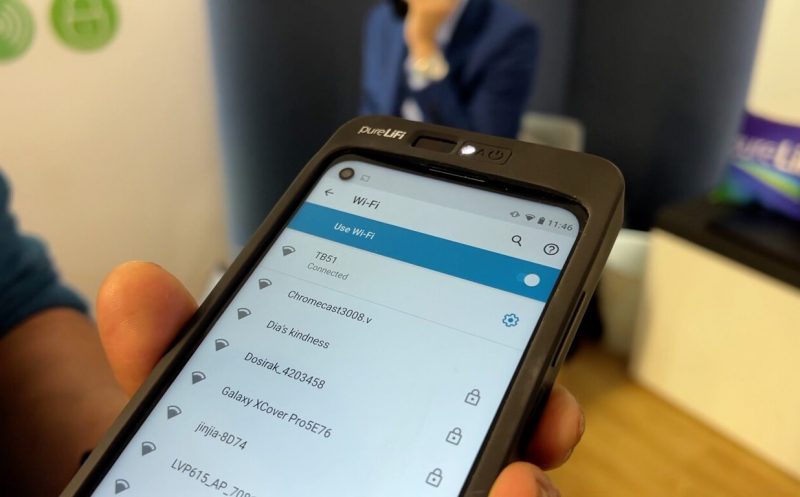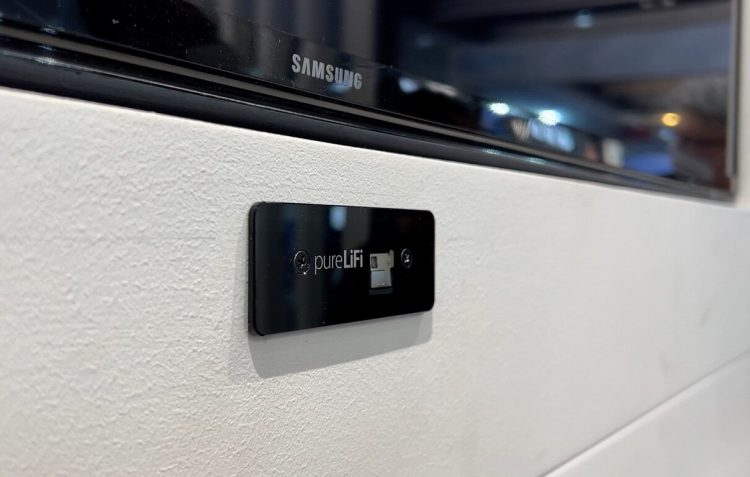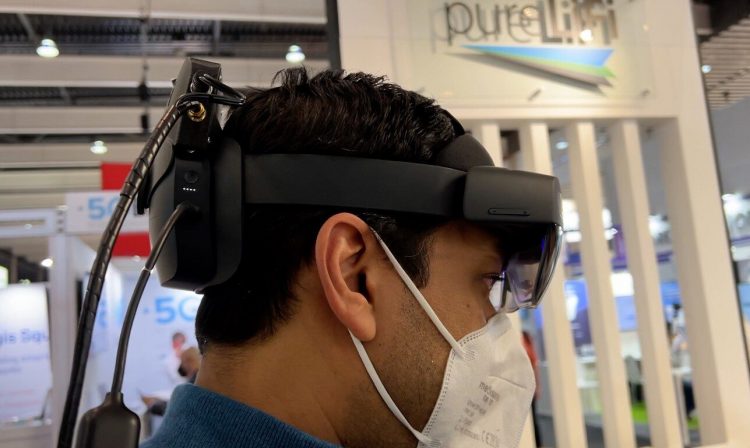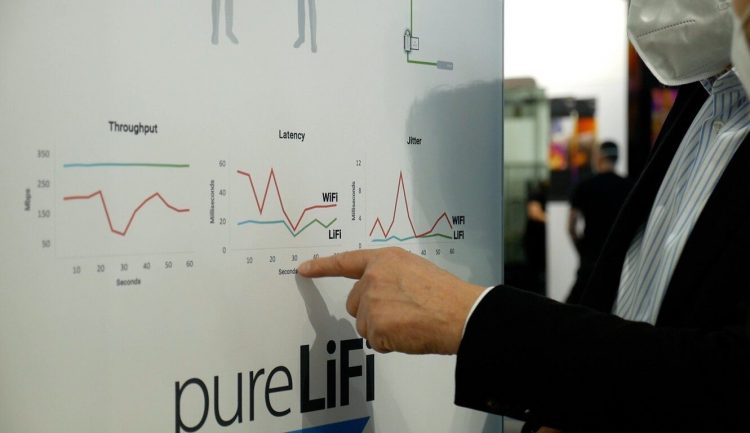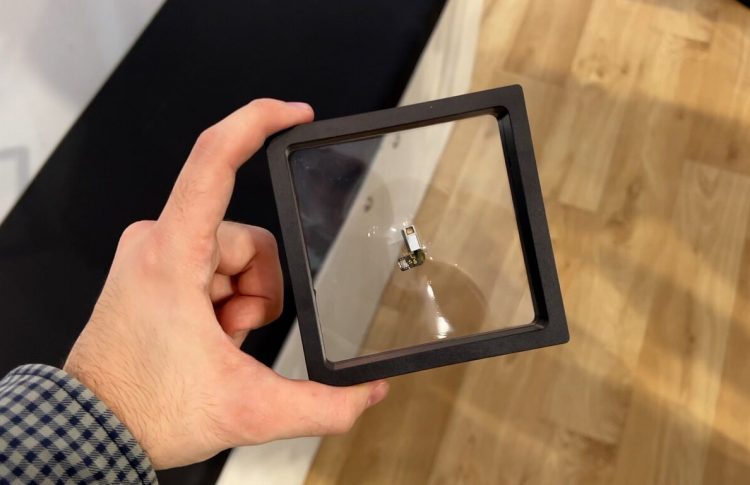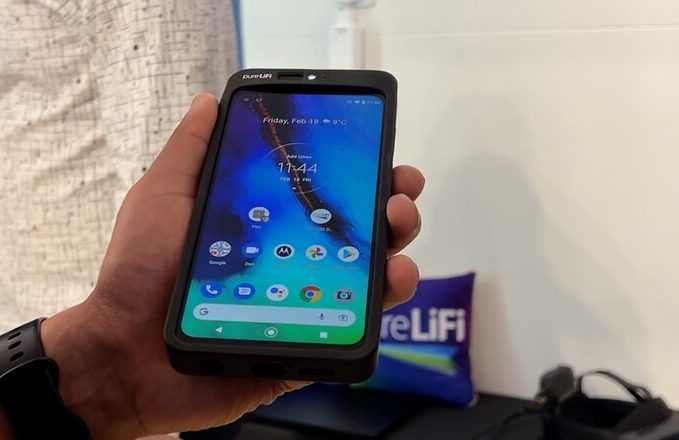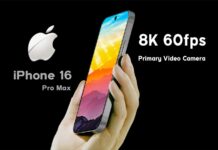Light Fidelity with the term of LiFi was introduced in Ted-Talk. In the year 2011 professor Harald Hass at the University of Edinburgh gave a lecture where he explained a technology to send data using light, instead of radio waves. A more efficient WiFi rival, without being able to be intercepted and with less latency. “The solution is light”, they promise from PureLifi, a company that works to expand this technology. During the last Mobile World Congress in Barcelona we were able to talk to them so that they could tell us about the latest LiFi news, in which projects it has been successfully implemented and what is the current status of this promising alternative to WiFi.
What advantages does LiFi promise (and where are the problems)
LiFi is based on sending data through light. How? Basically altering the frequency of light between 400 and 800 THz. As if they were LED bulbs that blink and serve so that a photoreceptor can establish a wireless connection. A light that turns on and off at a speed undetectable by the human eye but that allows two positions to be established and therefore to create a signal. Being light from the visible range instead of radio waves, LiFi promises to be faster, safer and have less interference than WiFi.
To get an idea of the speeds that LiFi promises, in early 2022, Kyocera announced a system capable of offering 90 Gbps . That is: 100 times faster than 5G . There is nothing. And it does not seem to be the ceiling, because a couple of years ago in laboratory pilot tests 224 Gbps were reached .
Being light, LiFi can also use the entire spectrum of visible light and has zero interference with other devices, as it can use a very specific wavelength. Finally, at the security level, they explain that an attacker cannot intercept the connection itself or spy on those communications. This point is a big difference with WiFi and serves to understand the underlying differences: visible light cannot pass through walls, so in practice it is required to have physical access to the LiFi signal itself.
While WiFi works throughout the house, LiFi is a short-range connection. Let’s think about Bluetooth, but even less. As described from PureLiFi, this technology is intended to be used at less than 4 meters . When there is no direct line of sight to the emitter, the connection is cut. If we have a mobile phone with LiFi, if we put it in our pocket we lose connection. In the dark it would work because you can use infrared.
In the demonstration that they gave us from PureLiFi, they showed us several devices connected by LiFi. One of them was a mobile with a casing that incorporated a small LED light that was connected to the signal emitter. The connection was made from the same Android WiFi settings section. The link was relatively fast but there we already discovered some peculiarities. For it to work, the mobile had to be focused on the signal light, with a certain tolerance to change angle . We also tried to pass the hand in front. If we do it quickly nothing happens, but when we hold our hand for more than 10 seconds, the signal is cut off.
Another demonstration was with light bulbs that emit LiFi. In the end, what they promise is that instead of connecting to a generic WiFi point, we have multiple lights distributed where we are interested and that we can connect through them. Each LiFi point is identified and can be controlled independently.
The first commercial solution based on LiFi
he theory says that LiFi can be practical to be used in airlines, in underwater operations or in hospitals. All of them are situations where the telecommunications antennas do not reach or there is interference, but a connection based on light could be established.
But at the moment of truth, at the moment all LiFi applications were reserved for the professional field. It was at this MWC 2022 that the company responsible for the development of this technology announced the launch of LiFi at Home, its first LiFi system focused on the commercial field.
There are no pricing or technical details yet for LiFi at Home, indicating that it’s not quite ready for the front line just yet. However, it is a step beyond what we had seen in the last four or five years, where all uses remained in the business or military field.
The idea is that we can replace some LED bulbs in the house with LiFi bulbs capable of interconnecting home automation devices without interference problems. LiFi@Home consists of an LED spotlight, a mobile phone case, a TV accessory and a HoloLens accessory . With these accessories you can have an internet connection through the light. During the MWC 2022 they gave us a demonstration and it worked without problems, always focusing directly on the object towards the light emitter.
Beyond the technology issues, what we saw is that both the case and the accessory for the augmented reality glasses were huge. PureLifi claims that they have managed to miniaturize their optical antennas to a level similar to WiFi modules, but in the case study we saw, the accessories required were still huge .
Practical cases of using LiFi today
LiFi is already used in the military, hospitals and certain organizations, but to date they are all niche projects. It has not been until this year when LiFi technology wants to start entering the commercial field. And the truth is that despite the official announcement of wanting to aspire to it, it looks like they will still need a few years.
In 2019, Air France, in collaboration with Ubisoft, used LiFi technology on a flight between Paris-Orly and Toulouse. Also in France, the company Oledcomm implemented a LiFi system in a school in Centre-Val de Loire. The project cost about 2,500 euros for a single classroom, although they understood that it was a pilot test and that the cost in the future would not be higher than that of WiFi.
The feedback offered by the students and the school was that the LiFi, in addition to offering a much better connection, helped decongest the WiFi in nearby classrooms. “In reality, LiFi is a complement to WiFi, not a substitute”, they reflect from PureLiFi when they explain this example to us. In those places where there may be a lot of interference, the use of LiFi can help improve coverage.
Another school, on Long Island, also has a LiFi system installed. In this case as a tool to help teach how telecommunications technologies work.
Oledcomm also installed several LiFi transmitters in the E.Leclerc supermarket in Paris . Through the use of light bulbs, they wanted to try to offer personalized discount coupons, but anonymously. This is because LiFi allows you to precisely control where the information is being sent. And anonymous because the way to “select” each user was through the chosen shopping cart.
In museums such as the Grand Curtius, in Liège, LED bulbs have also been used to geolocate users throughout the museum and offer them information at the right angle, with 3D representations.
In the military field, the British provider BT Defense deployed LiFi at its Adastral Park facilities to connect 3,700 employees. In late December 2021, PureLifi announced a “multi-million dollar” contract with the US military to supply thousands of units of its Kitefin transmitter. In what was the first large-scale deployment of this technology.
In hospitals, the use of LiFi dates back to 2014, when the Central Hospital of Perpignan used LiFi to be able to offer internet in those areas where patients and equipment could not be exposed to radio waves . At the Motol University Hospital in Prague, LiFi was used to provide a 600 Mbps connection, serving to publish the first report on the use of LiFi in hospitals .
The “Light WLAN” standard aims for 2023
The steps to adopt a new technology are many. Even more so if you aspire to create an alternative that may have a small gap next to the omnipresent WiFi. A couple of years ago the LiFi Alliance was born , an organization to promote this wireless connection through light. But the real jump is expected to come in 2023, when the “Light WLAN 802.11bb” standard is completed .
This is confirmed by PureLiFi, who explain that this standard is almost complete and they hope that the final adaptation will be early next year. From then on it will be when the interested manufacturers can start working on the first designs. By 2025, LiFi proponents expect the first hardware devices with integrated LiFi to arrive . A support that would reach the devices as one more specification. Just as mobile phones add 5G, WiFi, NFC, BT, infrared etc, their goal is for LiFi to be included in that package of connectivity technologies.
One of the criticisms that we can make with LiFi is that its adoption is far from being massive. Beyond the limitations of the technology itself, which exist and are quite relevant, one of the problems with LiFi is that the modules necessary for its operation are still expensive.
Of course, they are getting smaller. This was shown to us during the MWC, where the size of the transceivers was not much larger than the WiFi modules found in smartphones. According to those responsible, its LiFi modules have already been reduced enough to be able to be hidden in the notch of the screen where the front camera is located.
Regarding the price, PureLiFi explains that it depends a lot on the volume, but that in case of finding an important partner it would not be difficult to produce the LiFi antennas for a few dollars. We will see if next year this technology is one step closer to offering us a fast and accurate signal through light. It’s been too many years where WiFi is still present day by day (and improving) and LiFi hasn’t gone beyond promising technology.

